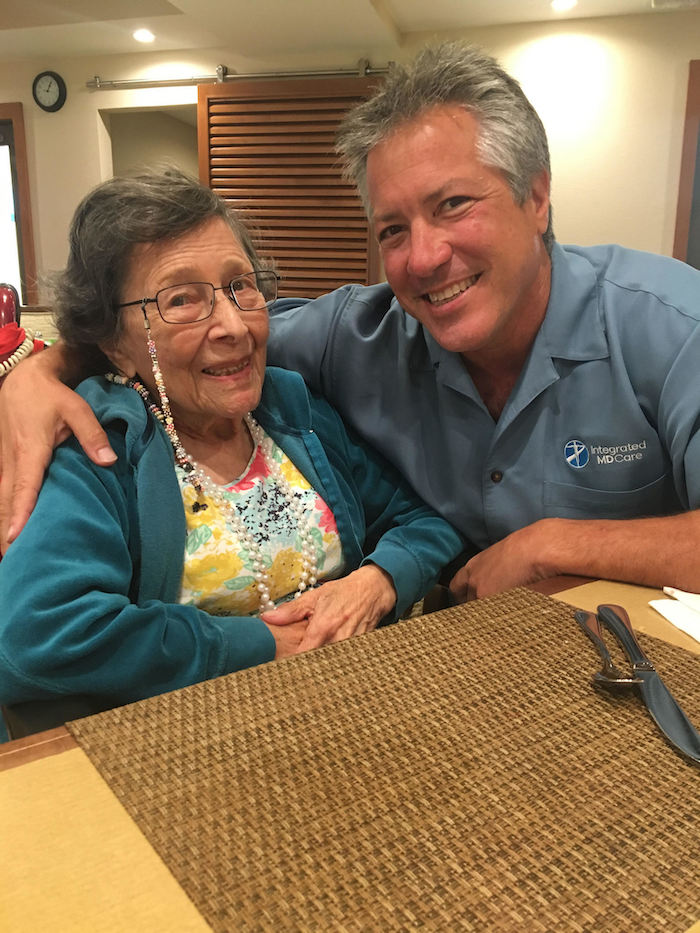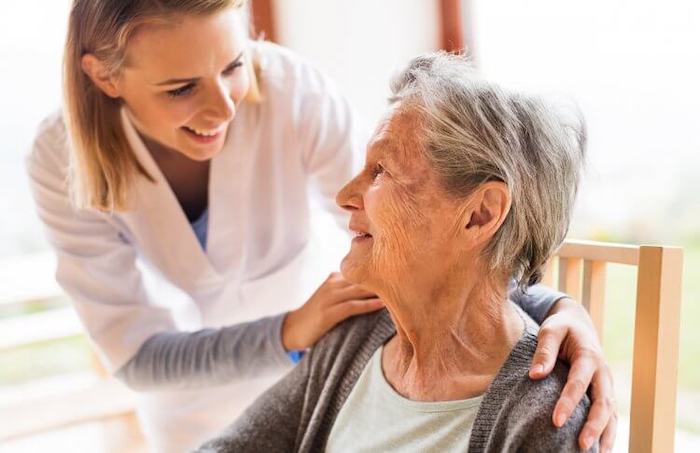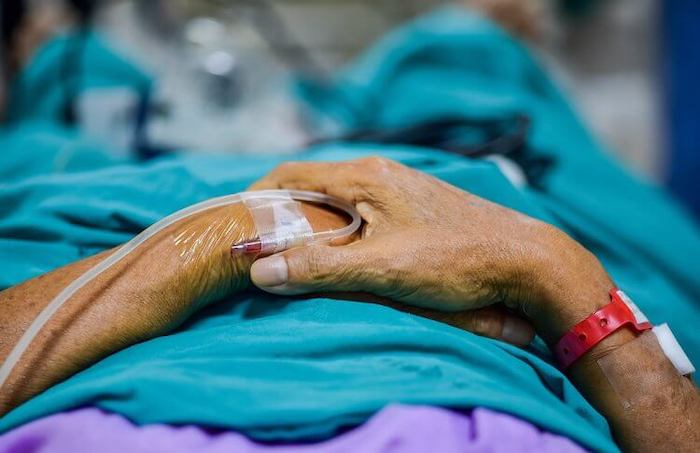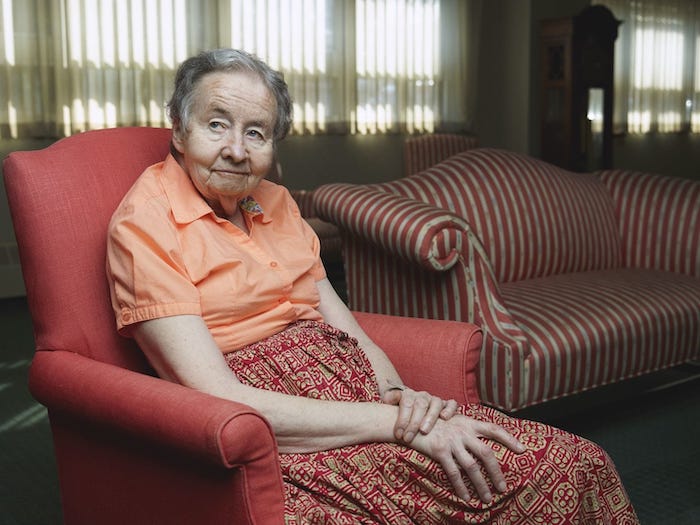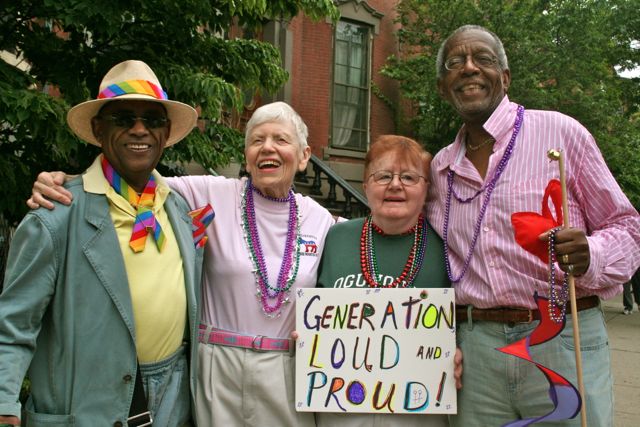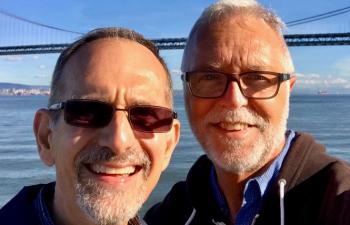There are many things we want to talk about with family and friends; death isn’t usually one of them. But from Death Salons to Death Cafes and dinners, there are plenty of signs in Seattle that this is changing

BY: Jen Swanson
There are a couple of ways to kill a dinner conversation. First, discussion of politics, a truism that is magnified in our divisive modern age. Second, religion, although this doesn’t often come up on this side of the Cascades. Finally, death, though most people would never consider raising a subject so morbid. In terms of topics to avoid discussing over dinner—or ever—mortality ranks high on the list.
However, one local entrepreneur and author, Michael Hebb, considers such conventional thinking dead wrong. “It’s like the opposite end of the continuum of talking about the weather or of a cocktail conversation,” says Hebb, whose new book, Let’s Talk About Death (Over Dinner), describes death as the most important conversation we’re not having. Such silence bears serious repercussions, and not only in terms of missed opportunities to connect with your loved ones. The book identifies end-of-life hospital expenses as a leading factor in American bankruptcies, Medicare patients outspending their total assets, and the sad fact that 80 percent of Americans die in hospitals, despite most wanting to die at home.

To Hebb, whose deep interest in death-related discourse led friends to throw a living funeral for his 40th birthday, one problem is that modern Americans no longer make time to eat together. “Just like we’ve forgotten how to pickle and can and preserve, we’ve also forgotten how to come together around the dinner table and have meaningful conversations,” he says, ruing the loss of this important “cultural engine.” The book and its companion website , inspired by a course Hebb taught at the University of Washington, offer an easy, DIY format intended to help readers host their own death dinners, with personalized cues and prompts that have fostered 150,000–200,000 dinners worldwide since launching in 2012. “There hasn’t been a single Facebook, email or Twitter response indicating a dinner went badly, which tells me that people know how to have this conversation,” says Hebb. “Maybe they’ve had a forgettable experience, but no one having a bad experience tells me that we’ve tapped into a basic human need.”
Hebb isn’t the only local focusing on this topic. From Death Salons to the locally produced Speaking of Dying film and companion workshops, there is a quiet movement in the area that’s giving voice to this once taboo subject. “This is a great region that’s having an interesting undercurrent conversation,” says Taryn Lindhorst, Ph.D., LCSW, a Behar professor of integrated oncology and palliative care social work at the University of Washington, who cites the Pacific Northwest’s counterculture vibe, antiauthoritarian bent and focus on experimentation as some of the reasons why.
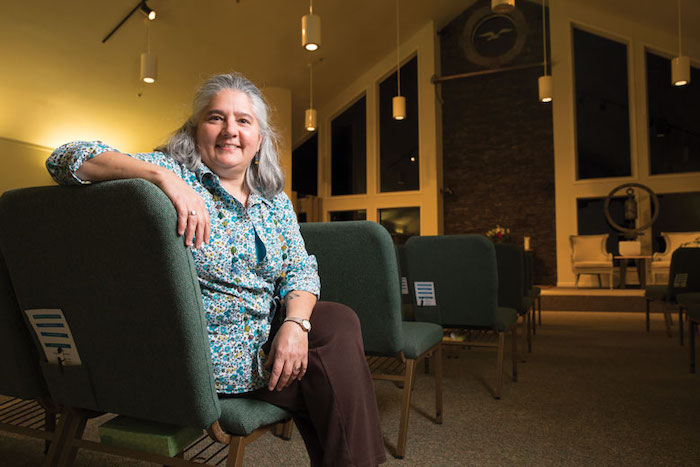
While Michael Hebb was restoring the lost art of breaking bread, the concept of discussing existential topics—like death—over tea and cake was gaining traction in England. The idea for Death Cafes was originally conceived in London in 2011, but quickly spread across the pond to North America and particularly to Seattle, where Death Cafes have cropped up in libraries, mortuaries, houses and actual cafés.
“It’s a safe place to talk about death,” says Karuna Duval, an ordained interfaith minister, hospice chaplain, certified death doula and one of many volunteer facilitators hosting Death Cafes in and around the city.
Duval has hosted Death Cafes in Washington and California, where she used to live, and estimates 7,200 Death Cafes have now taken place in 52 countries worldwide. “I just found it so fascinating because of the experience of so many people,” says Duval of attending her first Death Cafe in 2012 in California, following the deaths of her father, grandmother, partner and first husband. Such open discourse hadn’t been evident 10 years before, when Duval, inspired by a book titled Talking About Death Won’t Kill You, tried to organize her own workshops to foster end-of-life discussions and planning. The response then was lukewarm, but a decade later, the temperature had changed. “It felt like a relief,” says Duval, who was seeking to process all the loss in her life. “It was like, oh my gosh, I can finally be around people who aren’t like wigged out or weird talking about this stuff.”
There are all sorts of reasons why people don’t talk about death: A desire not to sound overly morbid. Fear of the unknown. A remove from death that has happened because so many people now die in hospitals, not at home. The superstitious notion that talking about death might hasten the event. The “go, fight, win” mode often prompted by serious illness. “In fact, the opposite is true,” says Hebb, describing how our cultural programming can work against us. “If somebody has a terminal diagnosis, having end-of-life conversations will extend their life. And that’s clinically proven.”
Our underlying “death anxiety” was the key focus of the late scholar, author and roving professor Ernest Becker, whose seminal book, The Denial of Death, won the Pulitzer Prize in 1974. “Ernest Becker was a cultural anthropologist who developed theories about how the uniquely human awareness of our mortality impacts our behavior,” explains Deborah Jacobs, executive director of the Seattle-based Ernest Becker Foundation, which was founded by a retired physician in 1993.
“I would posit that the death-positive movement is founded on Ernest Becker’s thinking,” says Jacobs of the growing swell of Death Cafes, death dinners and other efforts in recent years to reclaim the ways in which we talk and think about death, actions that echo the foundation’s longstanding efforts to bring our underlying awareness of death to the forefront.
To Becker, who saw death anxiety as a key driver in everything from religion and culture to our choices of partners and jobs, knowledge of our inevitable passing also drives each person to embark on an “immortality project,” or a quest to fill our lives with meaning. “Meaning has to last beyond our demise, our physical demise, so it could be making children, writing books, being good at your job, being a war hero, being a terrorist,” says Jacobs, noting Becker’s diverse appeal.
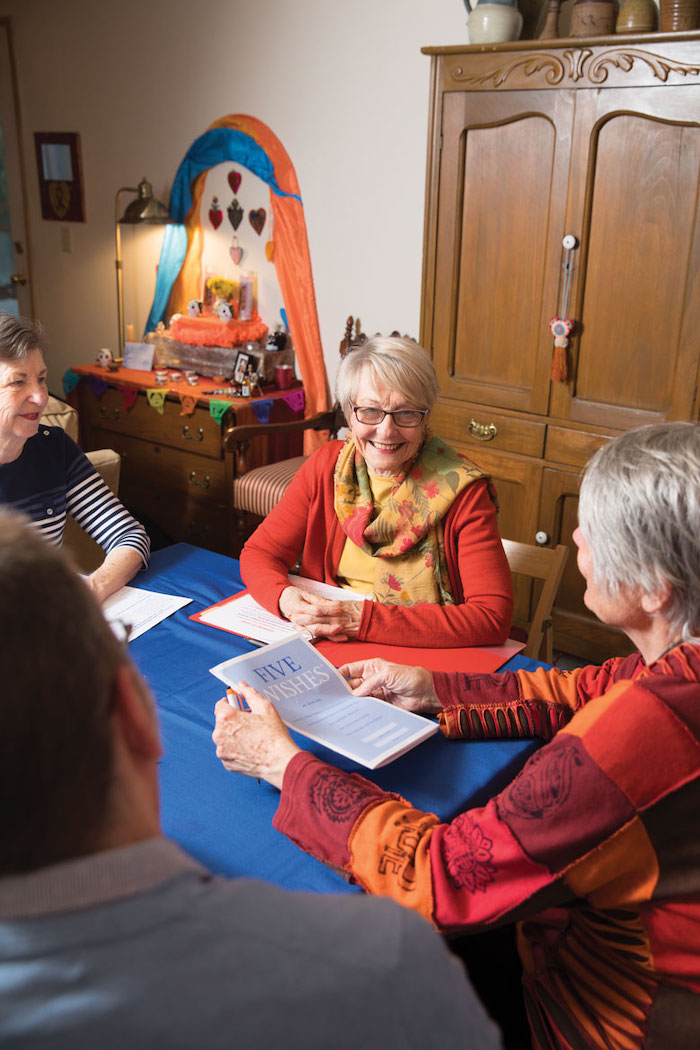
Trudy James, a retired hospital chaplain, also sees Becker’s theories at play in our current health care system. “The medical system became part of what was already the underlying denial of death,” says James, describing a system in which doctors don’t talk to their patients about death or dying. This marks a departure from James’ early career, which stems from the 1980s AIDS crisis, when patients knew they were going to die, openly discussed it and ultimately died more peacefully. “We live in this fantastic medical environment where we’re the beneficiaries of fabulous health care and have all these new procedures and new clinical trials and new treatments and new medications,” she says. “It’s caused people to believe they can live forever.”
James’ solution was to create a four-part series of end-of-life workshops and a documentary film, Speaking of Dying, which follows patients, families and medical professionals through various end-of-life options, including Washington state’s “Death with Dignity” law. Screened at churches, senior homes and other venues in Seattle since debuting at the Frye Art Museum in 2015, the film always draws attendees, including doctors and hospital chaplains who’ve never discussed death with their own families, says James, describing the documentary as an instant conversation starter. Meanwhile, the workshops, offered since 2008 through James’ company, Heartwork, offer participants a safe, intimate space to share stories, address questions and fears, complete advance directives and get familiar with hospice/medical procedures, such as CPR, which rarely works out in real life like it does in the movies. Doing this “real work of dying,” as James calls it, allows people to spend their final moments in peace with their family.
Death Doulas
These coaches help ease the end of lifeAs more people decide to die at home, death doulas, also known as end-of-life doulas or death midwives, guide patients and their families through the end-of-life process in a way similar to how regular midwives would assist with home births. Death doulas play various roles, from offering patients comfort and companionship in their final days to supporting the family by performing basic caregiving tasks, assisting with funeral planning and helping loved ones grieve. “It’s not to replace any of the components of hospice,” says Karuna Duval, a hospice chaplain who is also a death doula, of the two programs’ complementary functions. The International End of Life Doula Association (INELDA), founded in 2015, is just one of many organizations offering training and accreditation to anyone interested in joining this budding movement.
“If you haven’t had these conversations by the time you get to the hospital, the hospital is a terrible, terrible place to have them,” says Lindhorst, the UW professor, noting the ease with which hospitals can overwhelm patients who haven’t considered their options beforehand.
“It’s kind of like a conveyer belt,” says Lindhorst, describing a medical system whose default status is always set to treatment. “Once you step on it” and start down that path, “then treatment implies the next thing, implies the next thing, implies the next thing,” she says, noting how easily people can get moved through the system, in part because doctors don’t often have more than 15 minutes to explain various options. “It’s not anybody’s fault per se, but the system is so strong in this,” says Lindhorst, who saw early on in her career, which was also rooted in the HIV/AIDS epidemic, that the onus is on patients to be knowledgeable and empowered.
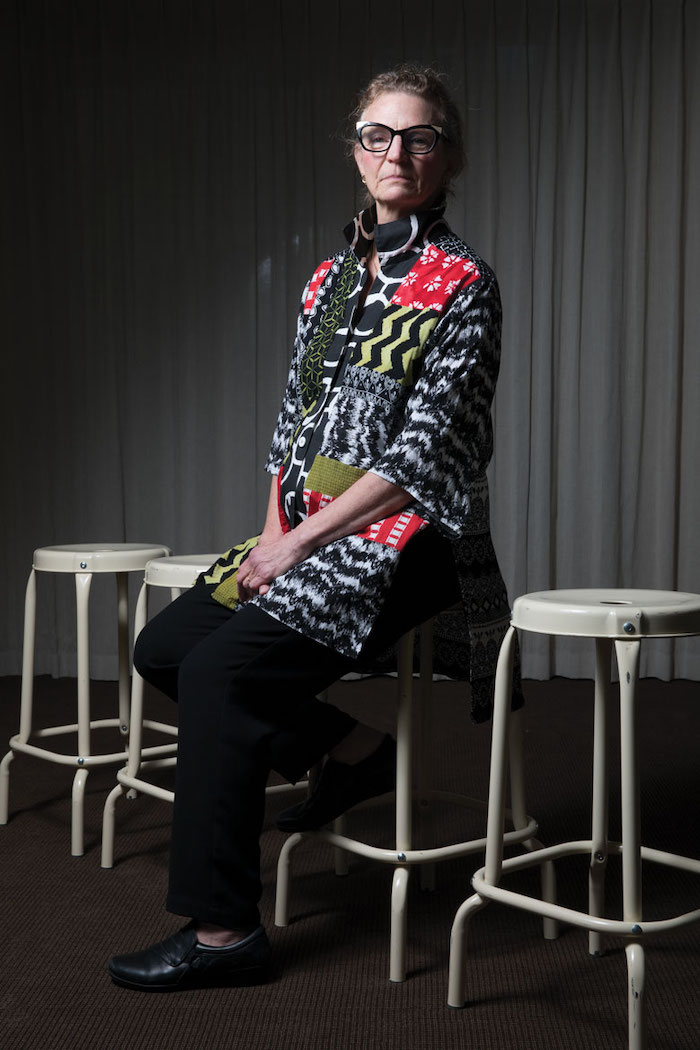
The medical community could learn something from Elizabeth Coplan, a playwright who four years ago was struggling to cope with the death of a cousin, a freak accident that claimed a loved one and octogenarian in-laws so fearful of dying they refused to entertain any end-of-life discussions. “Some people write in journals,” the theater veteran remembers of her efforts to process the situation. “I’m going to write about my cousin’s death as a play.”
That exercise resulted in The Grief Dialogues, a series of short plays structured like The Vagina Monologues, but with actors exploring scenarios centered on grief, death and dying. The 90-minute production, which invites a grief counselor on stage to lead an audience Q&A after every show, immediately resonated with people, says Coplan, who credits the play’s passive, third-party presentation as a safe way to broach a taboo topic. “By sharing my stories that way, which you could just take as strictly theatrical or you could take it as entertainment,” people finally started to open up, she says. “Suddenly, people who were afraid to talk about death in general, or their own experiences with grief, all of a sudden wanted to share their stories.”
It was while applying for grants for her production that Coplan came across The Order of the Good Death, a Los Angeles–based group of funeral-industry insiders, academics and artists seeking to promote a culture of “death positivity.” She was especially taken by the group’s Death Salon, a weekend conference on mortality styled in the vein of an 18th-century gathering of intellectuals, so much so that she volunteered to bring the event to Seattle. “It was kind of like a Comic-Con for death,” says Coplan, recalling the Victorian-style hairstyles, makeup and dress on display during the sold-out affair, which took place early in September 2017, in partnership with the UW School of Social Work.
The event marked an important turning point for Seattle’s death community by uniting the diverse leaders of a fragmented movement that had so far existed on the relative fringe. Presentations were delivered by Chanel Reynolds, whose husband’s untimely death led her to found GYST (Get Your Shit Together), a website introducing others to the easily avoided world of wills and life insurance. Other presentations included a Death with Dignity panel moderated by Sally McLaughlin, executive director of End of Life Washington; an introduction to green burials; a film about Death Cafes; and an exploration of postmortem pet options with Caitlin Doughty, the 34-year-old mortician who founded The Order of the Good Death in 2011. Lindhorst, the UW professor, explained the natural signs and symptoms of approaching death, knowledge that’s becoming increasingly rare as fewer people die at home. Nora Menkin, executive director of The Co-op Funeral Home of People’s Memorial—the country’s oldest and largest funeral cooperative and also a Death Salon cosponsor—examined alternative death care. Katrina Spade, the founder of Recompose, described her pioneering efforts to transform human remains into soil. On the first night, The Grief Dialogues debuted to a full house at the UW’s Ethnic Cultural Theatre.
“People who are into this, they’re hungry for it,” says Jacobs of the Ernest Becker Foundation, describing the Death Salon as a “critical community builder,” which has a mission similar to the foundation’s of providing “a home” for like-minded seekers. Along with cosponsoring the event—and participating in Death Salons in Philadelphia and Boston—the foundation facilitated a lunchtime dialogue, allowing guests to break from the conference format and engage in a round-table discussion about death.
The success of the Death Salon conference is one indication of our region’s relative death positivity, which could be attributed to the sheer number of innovators working in this space. “The good-death movement, or the death-positivity movement, used to be defined by a couple of individuals,” says Hebb. “Now, there’s a huge community of thought leaders, practitioners and enthusiasts, so that’s the big change,” he says. “It’s a very multidisciplinary community of people considering these issues,” he says, pointing to the mix of artists, entrepreneurs, doctors and “blue-chip establishment folks,” like Cambia, an organization that runs an entire center devoted to palliative care at the University of Washington, feeding Seattle’s “unique influence and impact.”
Such attitudes could also be influenced by our diversity, speculates Lindhorst, who points to our large Asian population as an example. Religions originating in Asia, she says, “have a very different kind of orientation towards death,” contrasting the Christian biblical literalist interpretation of death with Buddhist movements flourishing on the similarly progressive West Coast. “In many Asian cultures, that idea of integrating daily thinking about death is actually part of the spiritual condition as opposed to the dominant avoidance that we have here in the United States.” Social media, which makes it easier than ever to find and share information, also factors into the death-positive movement’s recent swell.
“I think more of us are talking about death and grief in a very open way,” says Coplan, describing today’s conversations about death as less a “macabre, voyeur” issue and more of an academic one, even if society still has some way to go. “I actually give the millennials a lot of credit for this kind of chipping away of the stigma around talking about death,” says Coplan, who has two millennial sons and meets plenty more at her shows. “They are incredulous that their parents are getting so worked up and don’t want to talk about death,” she says, describing the younger generation’s lack of fear regarding what they know to be a natural eventuality. “We talk about sex, we talk about drugs, why don’t we talk about death?”
Why Talk About Death?
There are lots of good reasons to talk about death, and not only because such discussion helps us prepare for the inevitable. Completing your advance directive, a set of legal documents that detail your last wishes, and communicating its contents and location to loved ones clarifies your thoughts on life support and other medical interventions. (Advance directive forms are available from your physician or most health care organizations.)
Sharing your post-life wishes up front removes any guesswork involving the funeral, which, pending legislation scheduled for the upcoming January session in Olympia, could soon extend beyond the standard burial and cremation options to include alkaline hydrolysis, a water-based cremation also known as “aquamation,” and recomposition, a natural process that converts human remains into soil. Communicating the contents of your will and choosing an executor of your estate helps avoid surprises and legal pushback. Moreover, having these conversations beforehand alleviates stress on your loved ones, allowing them to avoid making difficult decisions under pressure and simply focus on their grief.
“The people who have had the conversation and at least know what the deceased person wanted, if they got a chance to talk about what was important to them, they’re much more confident in making the decisions and going through the process,” says Nora Menkin, executive director of People’s Memorial Association and The Co-op Funeral Home on Capitol Hill. “The people that tend to have the hardest times are ones that didn’t have any conversation, therefore there was absolutely no preparation for it,” says Menkin, whose organization, in addition to regular end-of-life planning workshops, furnishes each of its 70,000-plus members with end-of-life planning documents that double as excellent conversation starters. “We also want to make sure it starts the conversation with the family, because it does the family absolutely no good for Mom to say, ‘Oh, it’s all taken care of,’ but not tell them what she wanted.”
A Few Tips for Getting the Conversation Started
It’s never been easier to instigate conversations about death, at least if you have a copy of Michael Hebb’s new book, Let’s Talk About Death (Over Dinner). The book builds a solid case for why the dinner table is actually the perfect place to discuss death and dying followed by ideas and tips—including what to eat, whom to toast, and a menu of conversation starters—for hosting your own death dinner at home.
Prompts include, but aren’t limited to, the following thought-provoking questions:
• If you had only 30 days left to live, how would you spend it?
• What is the most significant end-of-life experience of which you’ve been a part?
• Do you believe in the afterlife?
• Would you ever consider doctor-assisted suicide?
• If you were to design your own funeral or memorial, what would it look like?
• What song would you want played at your funeral? Who would sing it?
• What does a good death look like?
“It’s like a board game,” says Hebb of the death dinner series’ easily replicated structure, which is also available online. “The only thing we don’t provide is the food.”
Complete Article ↪HERE↩!


